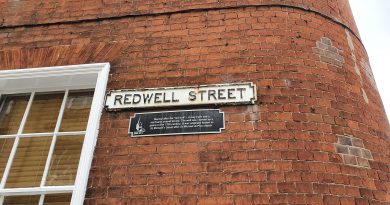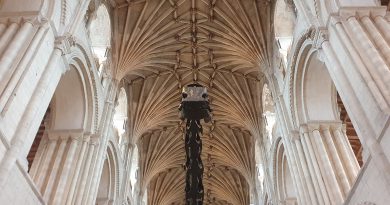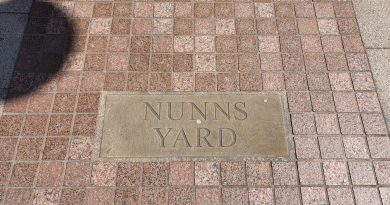Norwich – Flint Wall of Bridewell
This pathway doesn’t appear to have a name on either old or new maps, but it separates Bridewell Museum from St. Andrew’s Church. And indeed, it appears that if we could go back 500 years to take a photo, this would look nearly exactly the same. Well, other than for the paving, that might not have been as good.
OK, this is just a flint wall on the north side of Bridewell Museum, but it has gained a reputation for being one of the finest walls of its type in the country. And I think that deserves a blog post all of its own….
What is today known as the Bridewell was actually built as a residential property in the late thirteenth or early fourteenth century. It was upgraded by William Appleyard in 1386, and at a guess, I think that this was when this wall was constructed. The building’s use changed after 1583, when it became used to house the city’s poor and unemployed, putting them to work, which is when it became the Bridewell.
As an aside here, a Bridewell is a prison, and it took its name from one which was set up in London that was next St. Bride’s Holy Well. The name stuck there and was then used throughout the country, although these buildings were often also referred to as Houses of Correction. Anyway, the building was badly damaged by fire in 1751, the prisoners were moved out and it was then used as a factory, warehouse, storage unit and anything else the locals could think of. In the early twentieth century, it was given to the city to be used as a museum and it is now known as Bridewell Museum, the Museum of Norwich.
The quality of this wall is pretty impressive and I’d hardly call myself a flint expert.
This intrigued me and I could think of only one person I knew that could tell me what this was, and that’s my fellow NORAH trustee, David Stannard. I hope he won’t mind me quoting him:
“The Bridewell wall is a classic example of knapped flint, and the picture of the circular feature is just that, flint. Flint is amorphous, i.e. it has no crystal structure to determine the way it breaks, and this block of flint, when broken in half by a hammer has produced this curious bulb…..it is termed conchoidal fracture.
Curiously, if you look at the picture upside down you get an optical illusion of a hole rather than a cone….so there may be a corresponding ‘hole’ somewhere else on the wall….the courses above and below show similar bulb features.”
And he’s quite right, look at the photo upside down!









